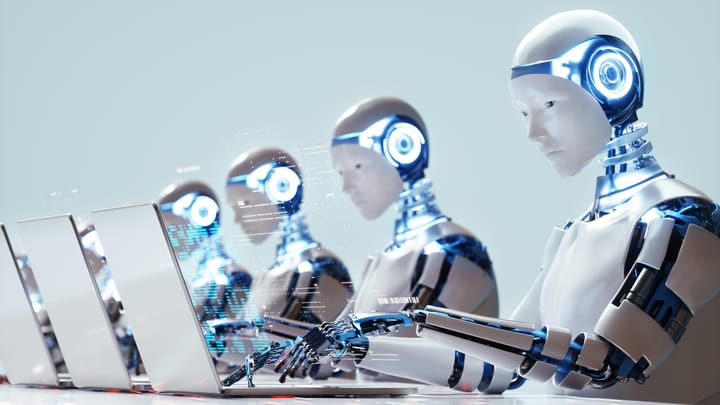The Future is Here: Microsoft Unveils Revolutionary Quantum Chip

Microsoft Unveils the Majorana 1 Chip – A Quantum Leap in Computing
Microsoft has just announced a major breakthrough in quantum computing: the Majorana 1 chip. The company claims this new chip brings practical quantum computing closer than ever—"years, not decades" away.
With this bold claim, Microsoft joins tech giants Google and IBM in predicting that quantum computers capable of solving real-world problems could arrive much sooner than previously thought.
This advancement is huge because quantum computers have the potential to revolutionize industries like medicine, cybersecurity, and artificial intelligence, solving complex problems millions of times faster than today’s supercomputers.
But what makes Microsoft’s Majorana 1 chip special? And how does it compare to Google and IBM’s quantum efforts? Let’s break it down.
What is Quantum Computing & Why Does It Matter?
Quantum computing is a completely different approach to processing information compared to classical computers. While traditional computers use bits (0s and 1s) to process data, quantum computers use qubits—which can exist as both 0 and 1 at the same time due to a phenomenon called superposition.
This means quantum computers can explore multiple possibilities simultaneously, making them exponentially faster for certain types of problems.
Real-World Applications of Quantum Computing
If quantum computing reaches its full potential, it could:
. Revolutionize drug discovery by simulating molecular interactions in seconds instead of years.
. Break current encryption methods, making traditional cybersecurity systems obsolete.
. Optimize logistics and AI models at an unimaginable speed.
. Solve complex climate and energy problems using rapid simulations.
But there’s a big challenge: quantum computers are highly unstable. Qubits are incredibly fast but also extremely prone to errors, making them difficult to control. This is where Microsoft’s Majorana 1 chip comes in.
What Makes Microsoft’s Majorana 1 Chip Special?
The Majorana 1 chip is designed to solve one of quantum computing’s biggest problems: error rates.
What Is the Majorana 1 Chip?
- Developed by Microsoft over nearly two decades.
- Uses a special subatomic particle called the Majorana fermion, first theorized in the 1930s.
- Built with indium arsenide and aluminum, featuring a superconducting nanowire to observe the particles.
- Designed to be less prone to errors than rival quantum chips.
The Majorana Fermion – A Rare Scientific Marvel
The Majorana fermion is a theoretical particle with unique properties that make it ideal for quantum computing. Unlike regular qubits, Majorana-based qubits are naturally more stable, meaning fewer qubits are needed to build a powerful, error-resistant quantum computer.
How It Compares to Google and IBM’s Quantum Chips
- Google’s Quantum Chip: Last year, Google revealed a new quantum chip and claimed quantum applications could arrive within five years.
- IBM’s Roadmap: IBM predicts large-scale quantum computers will be available by 2033.
- Microsoft’s Majorana 1: Microsoft believes it will need far fewer qubits to make a powerful quantum computer due to lower error rates.
Microsoft hasn’t provided an exact timeline for when the Majorana 1 chip will be scaled up, but the company insists we are years, not decades away from practical quantum computing.
How Was the Majorana 1 Chip Created?
Microsoft fabricated the chip in its labs in Washington state and Denmark.
Jason Zander, Microsoft’s Executive VP, described the project as a "high-risk, high-reward" strategy. According to Zander:
"The hardest part has been solving the physics. There is no textbook for this, and we had to invent it. We literally created this thing atom by atom, layer by layer."
What’s Next for Microsoft’s Quantum Computing Ambitions?
- Microsoft will continue scaling up the Majorana 1 chip.
- The company aims to reduce quantum error rates even further.
- Future versions of the chip could power next-generation quantum computers for commercial use.
Challenges & Risks of Quantum Computing
Despite its potential, quantum computing also comes with serious risks.
1. Cybersecurity Threats
Most encryption systems today are based on mathematical problems that classical computers can’t solve in a reasonable time. However, a fully developed quantum computer could break modern encryption in seconds, posing a huge cybersecurity threat.
2. Stability Issues
Even with Microsoft’s advancements, quantum computers are still extremely difficult to maintain. They require ultra-cold temperatures and are prone to external disturbances.
3. Hardware Limitations
Microsoft’s chip currently has far fewer qubits than its competitors. While Majorana qubits may require fewer numbers, scaling the chip to practical quantum levels is still a challenge.
Will Microsoft Win the Quantum Race?
Microsoft is now one of the top contenders in the quantum computing race, alongside Google and IBM.
- Nvidia CEO Jensen Huang is skeptical, believing we are still 20 years away from quantum computers surpassing AI-driven supercomputers.
- Google says practical quantum computing is just five years away.
- IBM predicts large-scale quantum computers by 2033.
- Microsoft claims it will take just a few years, not decades.
If Microsoft can successfully scale up the Majorana 1 chip, it could leap ahead of Google and IBM in the quantum race.
A New Era for Computing?
Microsoft’s Majorana 1 chip is a groundbreaking development that could bring us closer to a quantum-powered future. If the company’s claims hold up, we might see practical quantum computing much sooner than expected.
But there are still many hurdles to overcome before quantum computers become mainstream. Will Microsoft’s bet on Majorana fermions pay off? Only time will tell.
What do you think—are we really just years away from the quantum revolution? Let us know in the comments!



